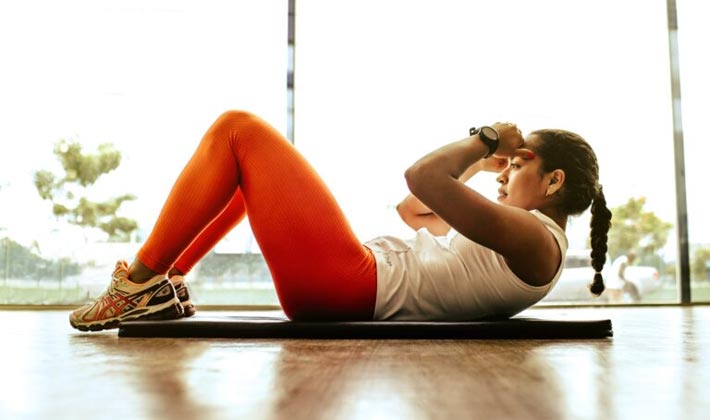In the winter, indoor workouts tend to be appealing to more people. While working out indoors, shoes are still an important consideration. Wearing the proper shoes is one of the best ways to avoid injury, even while exercising indoors.
Shoes can be easily forgotten during indoor workouts because not everyone will be walking all day in their athletic shoes. Rowing, cycling and weightlifting are some activities that may be performed without much thought in regards to footwear. However, these activities increase the demand on core muscles. This higher demand to the core will in turn shift the feet to absorb and support the change in body positions. Performing these activities barefoot may strain calf muscles and soft tissues in the feet. When overworked, you may experience pain and could strain a muscle. This may require weeks or even months of rehabilitation to correct, so prevention is the best medicine.
When looking for an appropriate shoe indoors, running shoes are a great choice as they work well for most activities. They are light weight, promote forward motion of the feet and contain many other features to help avoid injury. Here are a few great features to keep in mind:
Cushioning

A cushioned sole is great indoors, especially while on a treadmill or a hard surface. Cushioning will help to decrease pressure on your feet and legs during exercise. The shoe will help to absorb shock that the body may take on as a potential injury. Cushioning becomes very important during high impact activities, such as plyometrics, HIIT (high intensity interval training) and other jumping activities. If your feet and legs typically perform these exercises with shoes, they are not adapted to perform these exercises while barefoot.
Heel Counter
Another shoe feature that is highly recommended is a heel counter. The main purpose of the heel counter is to absorb the ground reaction forces when the foot makes contact with the ground. It also helps to prevent your heel from moving around excessively. Protecting the heel is important to reduce injury to the heel and the structures interacting with the heel. To test for a good heel counter in your shoe, push down on the back portion of the shoe. There should be some resistance, otherwise the heel counter is absent.
Arch Support
High impact workouts place higher stresses on the feet and require features that complement the exercise being done. In addition to cushioning to provide shock absorption, arch support is also important to avoid putting yourself at risk for injury. This arch support can be found in a couple different ways.
First, take a look at the stiffness at the midsole of the shoe (thick sole area). When the shoe is extremely flexible in the midsole, it increases the workload on your arch. Your arch contains your plantar fascia and other connective tissues, which are common areas of injury. Stability in the midsole is also important for side to side movements, as it will help to control motion in the legs and avoid injury to your ankles and knees.
Additional arch support through a foot orthotic may be necessary if the shoe is not enough. A foot orthotic helps to control excessive motion related to the way your feet are moving. An assessment with a Canadian Certified Pedorthist can help you determine if additional support is necessary.
Adjustability
While slip on shoes can be appealing for the ease of use, footwear with adjustability, like laces or velcro are always recommended. An adjustable closure will provide a more comfortable fit. Your feet can swell and change shape during the day, which can affect your shoe fit. An adjustable closure will help with shoe fit, even if your feet are slightly swollen. It also helps to keep your feet in place to reduce the risk of rubbing or slipping in the heels.
Remember to consider cushioning, a strong heel counter, arch support and adjustability as ideal features for your indoor workouts. These features are a great place to start when looking for shoes! In addition to these features, there are different styles that work better with flat feet versus high arches. A Canadian Certified Pedorthist will perform an assessment of your feet and legs to help determine what shoe would be most important for you. They will also give you recommendations on which of the above features are most important, and if any others would be beneficial. Visit your local Pedorthist to get a jump start on finding the best shoe for your indoor exercise routine.
By Kathrine Simpson, C. Ped (C)
